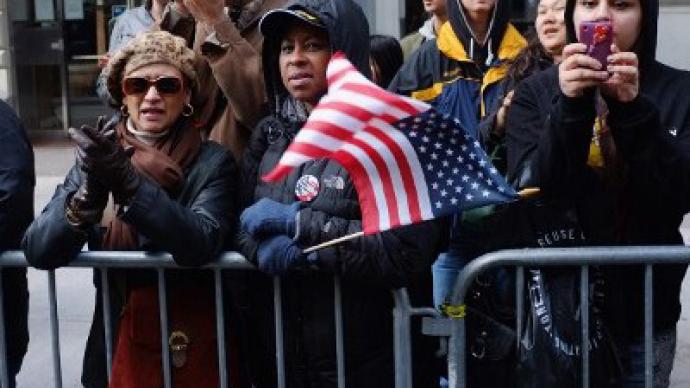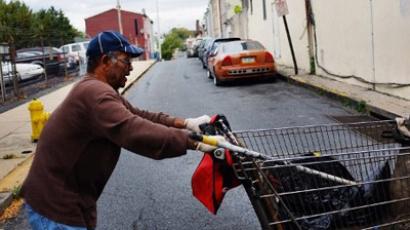Confirmed: middle-class shrinking in America

The middle-class in America is shriveling at an unthinkable rate, as a new study pulling from US Census data reveals that more families are finding themselves among the very poor or very rich.
A study this week out of Stanford University shows that only around 44 percent of families in America live in what the country considers middle-income neighborhoods, down from the 1970 statistic of 65 percent. At the same time, while only 15 percent of the country was grouped into either the lower- or upper-class four decades ago, that proportion has more than doubles with a third of America now in either end of the spectrum.Such segregation is creating what the study’s authors are calling the birth of a “two-tiered society” in the United States, as the proportion of those that are neither the haves nor have-nots shrinks and Americans are being bundled into either one or the other with little middle ground."We already kind of knew that segregation by income had been going up from 1970 to 2000, though I was struck by the magnitude of that increase," Professor Sean Reardon writes in his report. What his study reveals, however, is that the intensity of that increase was far greater than what experts had thought. "One of the striking findings in the report is that in 90 percent of metropolitan areas, income segregation went up in the 2000s."While the upper-class obviously benefit from their economic standing, a growing lower-class group means a larger portion of Americans than before are often unable to make-ends meet. The study also notes that upper-class Americans are increasingly migrating into new areas — either moving into the suburbs or gentrifying old areas — creating clusters of land that the growing lower-class cannot afford to live in.“More affluent citizens lives fundamentally different from the middle- and lower-income groups,” Harvard University sociologist William J. Wilson tells the New York Times. “This divide decreases a sense of community.” This report is only the latest study in a series of analyses made available as of late which are chronicling an increasingly incredulous dividing of America. As RT reported earlier this month, 2010 US Census data shows that 20.5 million Americans — or 6.7 percent — have personal incomes that put them below half of the poverty line. In Washington DC, more than one-in-ten of the 600,000 residents fall into that group, earning an annual income of less than $5,570 for an individual of $11,157 for a family of four. At the same time, however, the greater DC metropolitan region boasts the highest average annual income in America.Data used for the survey from Stanford comes from 2007 statistics obtained in the research project “US2010.”














